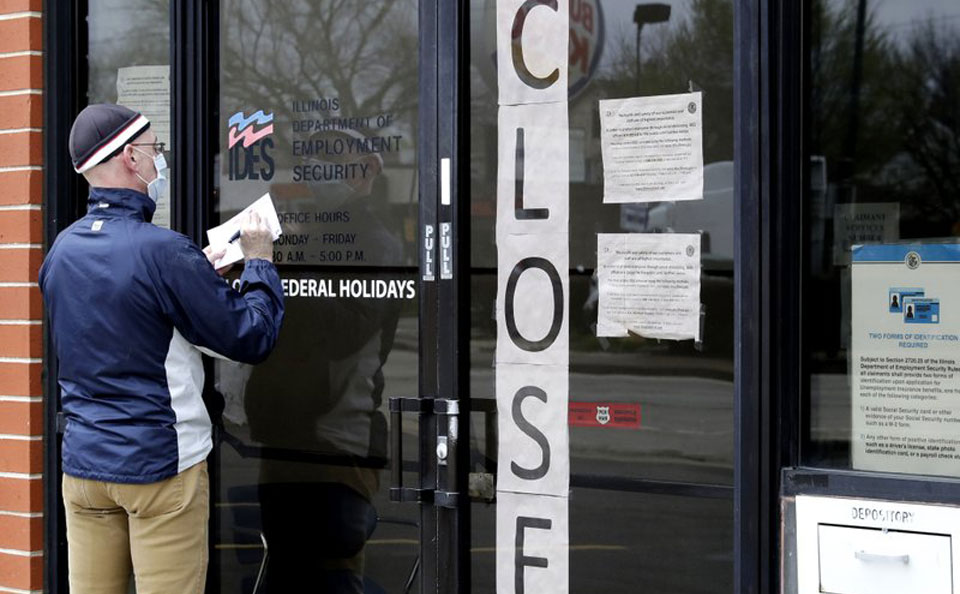
WASHINGTON—In a sign workers are finding jobs again following the year-long coronavirus-caused economic depression, new claims for state jobless benefits fell by 152,833, or 20%, in the week ending April 10, to 612,919, the Bureau of Labor Statistics reported.
Another 131,975 sought special federal pandemic jobless benefits that same week, down 20,444, or 15.5%, from the week before.
To put that in perspective, 4.9 million people filed for state jobless benefits alone in the comparable week of 2020. Special federal pandemic jobless aid didn’t exist then.
The figures don’t mean the economy is totally out of the woods, or that all the people who lost jobs due to the coronavirus-caused crash have found them.
Including that special federal aid—the $300 weekly checks for gig workers, home health care aides, and others regular unemployment insurance doesn’t cover—16,934,061 workers received state or federal jobless checks in the week ending March 27.
Add in 1,663,095 more who have applied for the state or federal aid in the ensuing two weeks, and two of every 15 workers are still seeking or getting unemployment benefits.
While workers are reclaiming jobs, there’s a gap between the genders in who’s doing so, the Institute for Women’s Policy Research reports. In simple terms, millions more women than men are still out of work.
One reason: The depression decimated occupations that employed mostly women. Those included state and local government, retail sales, child care, restaurants, bars, hotels, motels, and travel. Women, mostly women of color, are 93% of child care workers, federal data show. Another: 40% of working mothers had to drop their jobs to take care of the kids when schools and child care centers closed, the Brookings Institution reported.
“Without childcare, it will be very hard for women to come back to work on an equal basis with men,” IWPR analyst Ariane Hegewisch said. “The recovery is not done until all Americans benefit,” added Institute President C. Nicole Mason. “The data shows the support for working families. Democratic President Joe Biden’s infrastructure package is sorely needed and needs to be enacted to reach kitchen tables and pocketbooks.”
Biden’s infrastructure plan would allot $25 billion for building new child care centers, but it doesn’t mention raising wages for child care workers, who are among the lowest-paid workers in the U.S. His budget blueprint does.
Biden seeks $7.4 billion in federal Child Care block grants in the fiscal year starting Oct. 1. That’s $1.5 billion (20%) more than this year. And his American Rescue Act—the $1.9 trillion economic stimulus law—includes $40 billion to “help child care providers safely care for children of essential workers and low-income parents.”
“The administration would work with states to ensure” child care money “supports increased wages for early educators and family child care providers,” it adds.










